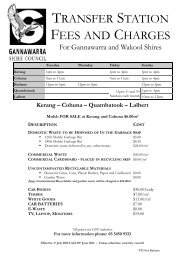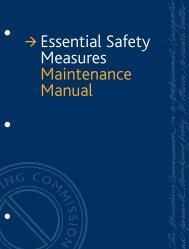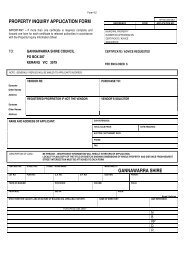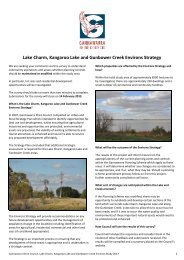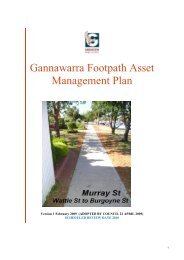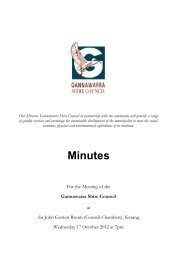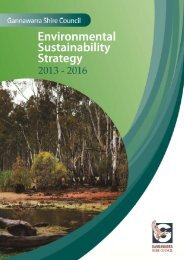Elder Abuse Policy - Gannawarra Shire Council
Elder Abuse Policy - Gannawarra Shire Council
Elder Abuse Policy - Gannawarra Shire Council
You also want an ePaper? Increase the reach of your titles
YUMPU automatically turns print PDFs into web optimized ePapers that Google loves.
Key principles underpinning the implementation of the Victorian Government<br />
<strong>Elder</strong> <strong>Abuse</strong> Prevention Strategy (See page 3 – With respect to age 2009)<br />
Competence - All adults are considered competent to make informed decisions unless<br />
demonstrated otherwise.<br />
Self Determination – With appropriate information and support, individuals should be<br />
encouraged to make their own decisions.<br />
Appropriate protection – where a person is not competent to make their own decisions, it<br />
may be necessary to appoint a guardian or administrator. If a person is represented, their<br />
wishes should still be taken into account as far as possible.<br />
Best Interests – The interests of an older person’s safety and wellbeing are paramount. Even<br />
when they are unable to make all decisions themselves, their views should be taken into<br />
account as far as possible.<br />
Importance of relationships – All responses to allegations of abuse should be respectful of<br />
the existing relationships that are considered important to the older person.<br />
Collaborative responses – Effective prevention and response requires a collaborative<br />
approach which recognises the complexity of the issue, and the skills and experience of<br />
appropriate services.<br />
Community responsibility - The most effective response is achieved when agencies work<br />
collaboratively and in partnership with the community.<br />
Duty of care (See page 99 – With respect to age 2009).<br />
A duty of care encompasses a duty not to be careless or negligent and arises from a relationship<br />
between parties that are regarded as sufficiently close as to infer that an obligation exists in some form.<br />
This relationship involves the notion of ‘proximity’ or a degree of closeness. Proximity is usually<br />
described in terms of time and (physical) ‘circumstantial casual’ relationship, such as the relationship<br />
between employer and employee, health worker and client.<br />
Duty of care involves a legal obligation to avoid causing harm or to prevent harm occurring to another<br />
person. This only arises where it is reasonably foreseeable in a particular situation that the other person<br />
would be harmed by an action or omission without the exercise of reasonable care. Health and aged<br />
care workers have a duty of care to older people they are assisting. Under the Wrongs Act 1958 (VIC) a<br />
worker is not negligent in failing to take precautions against a risk of harm unless:<br />
a) The risk was foreseeable (that is, it is a risk of which the person knew or ought to have known);<br />
and<br />
b) The risk was not insignificant; and<br />
c) In the circumstances, a reasonable person in the workers position would have taken those<br />
precautions.<br />
The duty of care obligation of an employee to foresee and prevent or avoid harm is limited by the<br />
employee’s professional expertise and competence.<br />
If a worker breaches their duty of care, they have failed to meet the expected standards of care. Duty<br />
of care not only refers to the actions of a worker but also to the advice the worker gives or fails to give.<br />
<strong>Elder</strong> <strong>Abuse</strong> Prevention Strategy – <strong>Policy</strong> Document – available through Office of Senior Victorians<br />
February 2011 page 2



